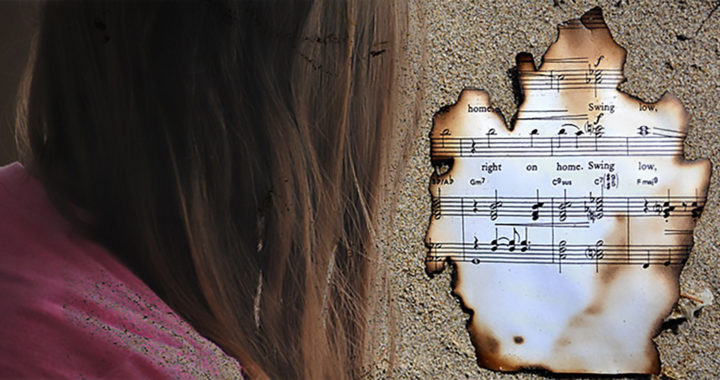Breakups are upsetting and a broken heart can bring forth both emotional and physical pain. The entire experience can be disabling. Those with a scorned heart often wallow in further sadness. For some, apart from shedding excessive tears and barraging friends with melodrama, listening to sad music seems to be one of the best ways to completely embrace sorrow and anguish. This is perfectly normal according to science.
Of Heartbreaks And Sad Music: ExplainingWhy We Listen To Sad Music Whenever We Are Brokenhearted According to Science
Several studies have tried to explain why people are predisposed to listening to sad music whenever they are experiencing a negative circumstance, particularly negative emotions and feelings. For starters, Jonna K. Vuoskoski et al. concluded that preference for sad music often correlates with personality traits.
Their study involved 148 participants. Results indicated that individuals who are open to new experiences and are highly emphatic tend to enjoy and demonstrate an intense emotional response from listening to sad music.
Self-Regulatory Strategies
For particular individuals who are undergoing emotional distress, psychologists Annemieke J.M. Van den Tol and Jane Edwards mentioned that this predisposition is part of several self-regulatory strategies aimed at re-experiencing affective and social experiences, retrieving memories, stirring cognitive reappraisal, and creating a distraction, among others.
Take note that self-regulatory is an integrated internal process to control emotions, behaviors, and desires. In other words, the study of Van den Tol and Edwards proposes that sad people listen to sad music for them to examine their situation and even their emotional disposition. Furthermore, some listen to sad music to create a distraction while others do so to stir a sense of understanding or to rationalize their negative emotions and situation.
Mood-Sharing Surrogate
Another interesting study by Chan Jean Lee, Eduardo B. Andrade, and Stephen E. Palmer revealed that listening to sad music while grieving due to broken intimate relationships creates mood-congruent aesthetic experiences. To be specific, sad music serves as a surrogate for mood-sharing that are often observed in empathic relationships. It thereby serves as a companion for sad people who are seeking to replace lost personal bonds.
It is interesting to note that apart from music, researchers Lee, Andrade, and Palmer concluded that people seek and experience emotional companionship from music, films, novels, and the fine arts as a substitute for lost and troubled relationships. Thus, music and other aesthetic products that evoke negative emotions are akin to an emphatic friend. This proposition is further supported by the fact that preference for sad music strongly correlates with preferences for empathy coming from someone.
The study of Lee et al also demonstrated the fact that preference for sad music tends to be significantly higher when people experienced an interpersonal loss such as a breakup compared with impersonal loss such as losing a competition.
Comfort and Imagination
Sad music can also be somehow comforting according to Japanese researchers Ai Kawakami, Kiyoshi Furukawa, Kentaro Katahira, and Kazuo Okanoya. Their study revealed that unlike sadness caused by real-life events or situations, sadness experienced through art can be pleasant because it does not pose an actual threat to safety.
Furthermore, if people are suffering from unpleasant emotions evoked through daily life, then sad music or any art form might help in alleviating or dealing with distress and negativity because apart from stirring negative perceived emotions, these aesthetic products can also stir positive emotions—making individuals feel romantic and blither.
A similar study by Kawakami, Furukawa, and Okanoya also concluded that sadness is multifaceted. Whenever sad people listen to sad music, they experience romantic and sad emotions. Thus, such music stirs ambivalent emotions as well as vicarious or imagined emotions. Experiencing these emotions help in appreciating and understanding the nature of the listening experience while also highlighting an aspect of the emotional system of each individual.
FURTHER READINGS AND REFERENCES
- Kawakami, A., Furukawa, K., Katahira, K., and Okanoya, K. 2013. “Sad Music Induces Pleasant Emotion.” Frontiers in Psychology. 4. DOI: 3389/fpsyg.2013.00311
- Kawakami, A., Furukawa, K., and Okanoya, K. 2014. “Music Evokes Vicarious Emotions in Listeners.” Frontiers in Psychology. 5. DOI: 3389/fpsyg.2014.00431
- Lee, C. J., Andrade, E. B., and Palmer, S. E. 2013. “Interpersonal Relationships and Preferences for Mood-Congruency in Aesthetic Experiences.” Journal of Consumer Research. 40(2): 382-391. DOI: 1086/670609
- Van den Tol, A. J. M. and Edwards, J. 2014. Listening to Sad Music in Adverse Situations: How Music Selection Strategies Relate to Self-Regulatory Goals, Listening Effects, and Mood Enhancement.” Psychology of Music. 43(4): 473-494. DOI: 1177/0305735613517410
- Van den Tol, A. J. M. and Edwards, J. 2011. “Exploring a Rationale for Choosing to Listen to Sad Music When Feeling Sad.” Psychology of Music. 41(4): 440-465. DOI: 1177/0305735611430433
- Vuoskoski, J. K., Thompson, W. F., McIlwain, D., and Eerola, T. 2011. “Who Enjoys Listening to Sad Music and Why?” Music Perception. 29(3): 311-317. DOI: 1525/mp.2012.29.3.311
